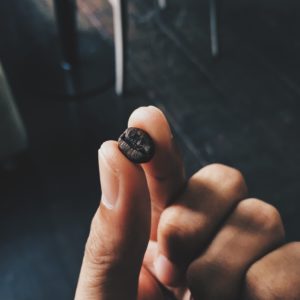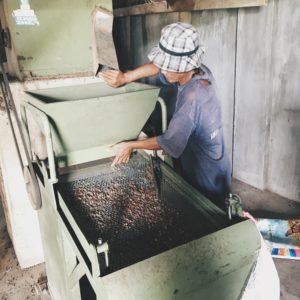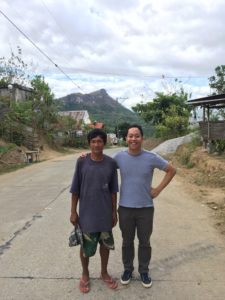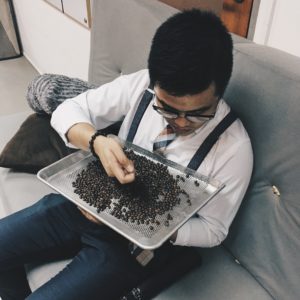The Philippines has a strong coffee culture that dates back to the 19th century. During those times, the country was the fourth largest coffee producer in the world. However, toward the end of the 19th century, “la roya,” or the infamous coffee rust disease, began to spread and nearly wiped out the coffee industries of Indonesia, Brazil, and Africa. The Philippines was not spared. Efforts were made to save the remaining plantations and since then, coffee producers have developed preventive measures against the fungus and have shifted their focus toward coffee varieties that were more resistant to the disease, i.e. Robusta, Liberica, and even Excelsa. Today, out of 71 provinces in the Philippines, 63 maintain and produce at least 25,000 metric tons of coffee annually, 90% of which is Robusta. However, the annual consumption of Filipinos is estimated at 100,000 metric tons. The sad reality is that we import three times more than we produce. From those we actually produce, 70% is cornered by the likes of coffee manufacturing multinationals; as a result, coffee development has stagnated into a discussion of “How much can you produce?” rather than “How high is the quality of your produce?” The quality of Philippine coffee has thus suffered. Farming practices are now outdated.

Back in March of 2017, my good friend Guill Mante and I were thinking of ways to help solve this perennial problem in the Philippine coffee industry. He was my former officemate, and coffee was a norm and a way of life for all of us in that office. We would all take turns in brewing coffee for everyone in the office using this simple automatic drip machine. I then approached Guill with the idea of helping coffee farmers and setting up an enterprise. He was interested in the business idea, and it took off from there.
At first, we fell into the trap of coming up with grandiose solutions to such a grandiose problem. Soon enough, we realized that the easiest (but time-consuming) way to solve it is to start at the origin. In recent years, there has been a rise in specialty coffee, which is basically an elevation of the beverage’s supply chain—from farming, to sourcing, to roasting—in order to come up with a brew that contains little to no defects and has unique flavors and taste notes that originate from the very soil that it comes from. More recently, the term “specialty” was defined by the Specialty Coffee Association of America (SCAA) as a cup of coffee that scores 80 points or above on a 100-point scale in a cupping evaluation. In my opinion, specialty coffee in itself is a natural evolution for the beverage, as what happened with fine wine and chocolates. It is not merely a marketing term that allows you to price your cup of coffee at a premium. In its truest form, specialty coffee is a nod to not overcharging your consumers, to responsible farming, to giving back to farmers, and finally, as Pope Francis phrased it when he visited in 2015, to caring for Mother Nature.

“Starting at origin,” for Guill and myself, basically means directly helping the farmers by applying the generally accepted practices of countries that can actually produce specialty coffee (for instance, Ethiopia, India, Panama, Guatemala, and Indonesia). While neither of us specialized in agricultural studies (Guill studied psychology, while I studied integrated marketing communications), we had enough experience in going to different farms, analyzing the little details that make a lot of difference to the brewed cup at the end of the supply chain, and tasting specialty coffees from different countries. And thus, Kapeng Unlaran was born—a coffee brand that gives back to the coffee farmers and enables them to elevate their coffee’s overall quality.
A quick Google search brought up dozens of coffee cooperatives operating in the Philippines. Further digging helped us find their contact details, which led us to Mang Armando Francisco, one of the heads of the coffee cooperative that we found in Doña Remedios Trinidad (DRT), the least traveled town in the province of Bulacan. Mang Armando’s barangay is 85 km from UA&P, an almost three-hour drive. Some of Mang Armando’s woes involved the high logistics cost of bringing their coffee to Manila, the staggering decline of coffee production in the last decade, and the increasing costs of maintaining a huge plantation. Our proposition to them was simple: we buy their green coffee at a premium, sell it in Manila, and give them funds to repair their hulling machines, to make raised drying beds, and if their land is still enough, to plant more coffee seedlings.

The Unitas Blend is the first product of our partnership with the farmers of DRT. It was conceptualized for the Golden Jubilee anniversary of UA&P. The “blend” in the name is actually a misnomer, as the beans in every bag of Unitas Blend actually come from a single origin – that little barangay in the town of DRT. After acquiring the jute sacks of coffee from Mang Armando, we carefully sorted the green beans, a painstaking process of sifting through the beans and picking out the bad ones, which if done with the highest attention to detail, could last up to one hour per 100 grams. Guill and I then partnered with a renowned specialty coffee roaster in Manila, and we felt proud when they commended the sorting that we did. The result was an overall earthy and nutty cup of coffee, which, from experience, could compete against some Indonesian and Vietnamese coffees. While there are still some natural defects that stem from the way the coffee cherries were picked, hulled, and dried, a little spark was kindled in Guill and myself – a spark that gives hope to a future where we can see improved farming processes, quality of coffee, and lives of the partners that we found in DRT.

Solving the problem of quality always starts at origin. We are happy that we are not alone in doing this; others are faring better in Benguet, Bukidnon, and even in Davao. There is a healthy and burgeoning competition. So long as we all realize that there is more to this than money, so long as we know the true purpose of what we are doing, and so long as more people come to realize that there is a lot to improve in the coffee industry, then there is hope: hope for better export-quality coffee, hope for a generally elevated view of transparency in coffee farming and sourcing, and hope for a better life for our coffee farmers.
Cheers to that hope.
Joey Mundo is an alumnus of the IMC program of UA&P. He is currently a management trainee in BPI’s Corporate Credit division. His side hustles include Kapeng Unlaran, a coffee startup that gives back to coffee farmers, and La Residencia de Estudiantes, a residence for students and alumni of UA&P.
Leave a Reply